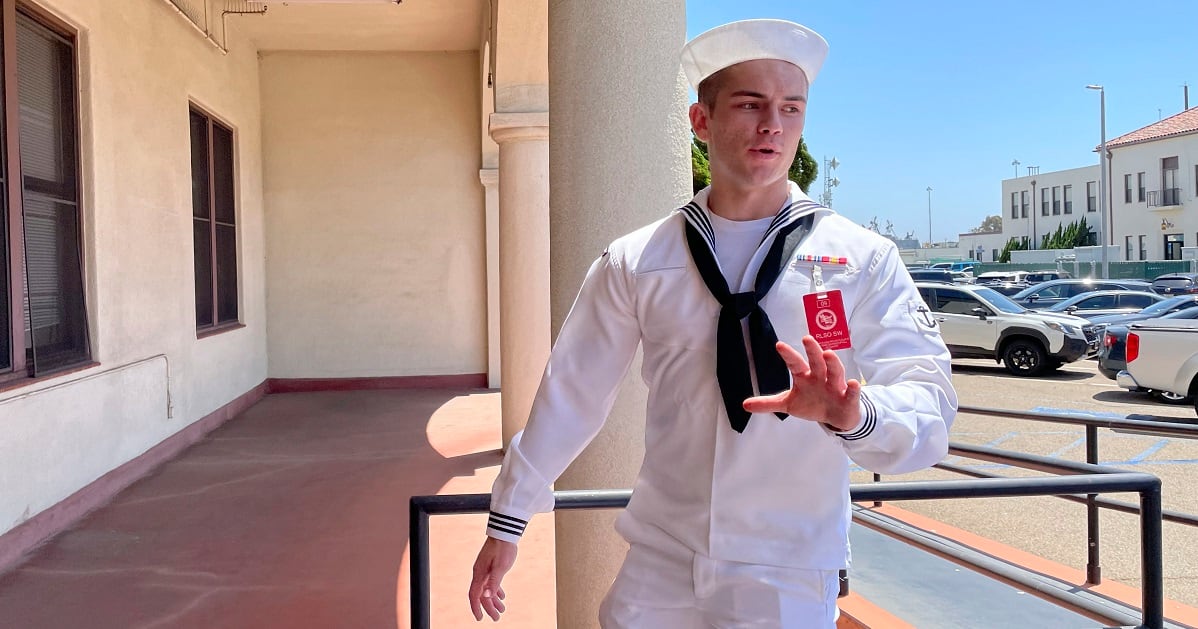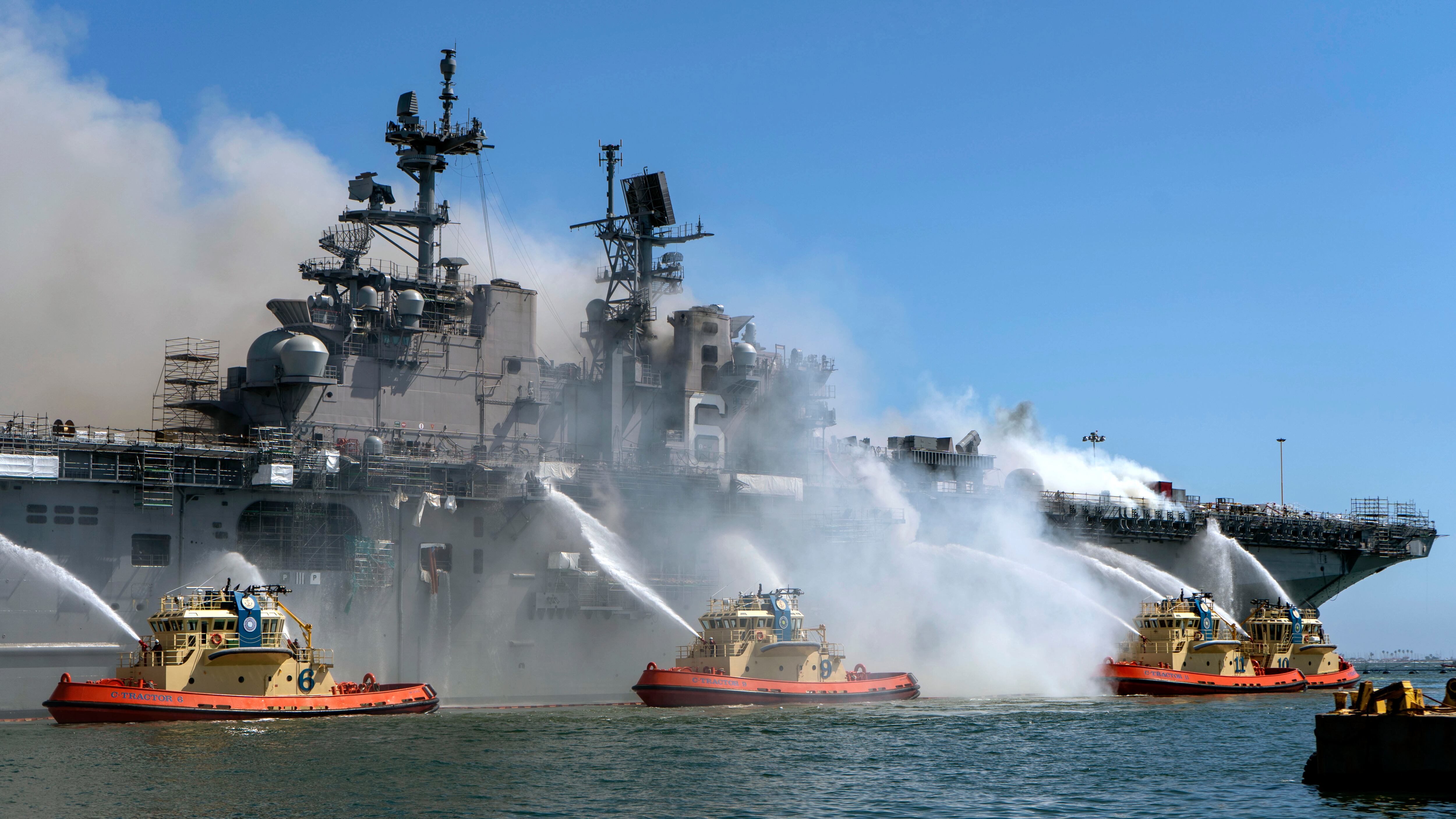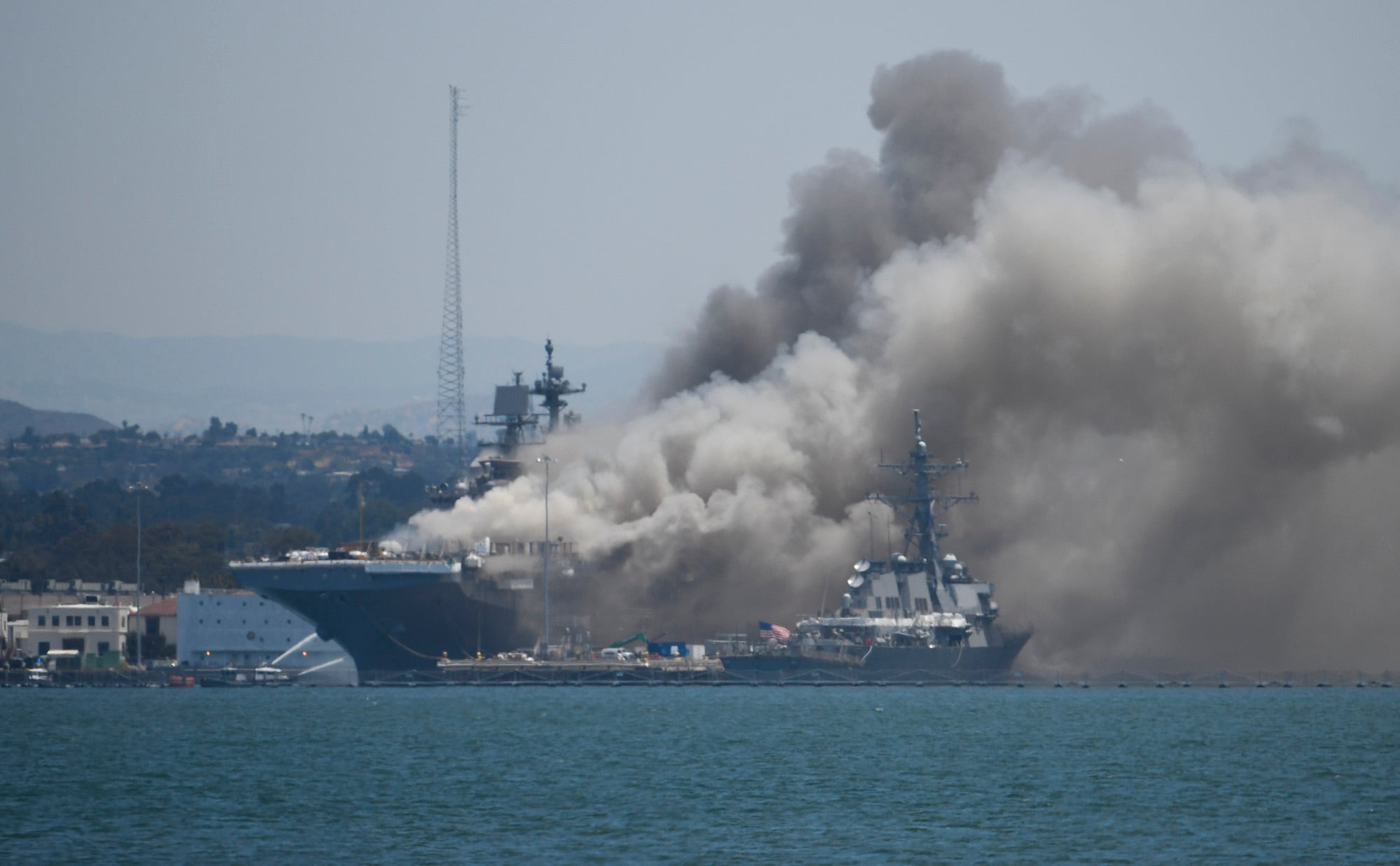Editor’s note: This story has been updated with additional information from court proceedings.
SAN DIEGO — No one disputes that the Navy shares blame for the loss of the USS Bonhomme Richard, the $1.2 billion amphibious assault ship that was consumed by flames in San Diego in July 2020 as officers failed to respond quickly and its crew struggled with broken equipment.
But none of that would have ever happened, according to the prosecution’s closing arguments Thursday, without Ryan Sawyer Mays.
Prosecutors say the young sailor was angry and vengeful about failing to become a Navy SEAL and being assigned to deck duty, so he ignited the ship to send a message.

Defense lawyers said in their closing statements that the Navy was determined to pin the worst noncombat Navy disaster in recent memory on someone — and the sailor they picked, Mays, might be the wrong guy who now is facing a possible life sentence. There is no physical evidence tying the fire to Mays.
Mays, who was charged with arson and the willful hazarding of a ship, says he’s innocent.
RELATED

The prosecution says Mays ignited cardboard boxes early that Sunday morning in a lower vehicle storage area on the vessel — which was docked while undergoing $250 million in maintenance work — to drive home his text earlier to his division officer that the ship was so cluttered with contractors’ stuff it was “hazardous as (expletive).”
The prosecutor, Capt. Jason Jones, acknowledged in court a Navy report last year that concluded that the inferno was preventable and unacceptable, and that there were lapses in training, coordination, communications, fire preparedness, equipment maintenance and overall command and control. The failure to extinguish or contain the fire led to temperatures exceeding 1,200 degrees in some areas, melting sections of the ship into molten metal that flowed into other parts of the ship. Navy leaders disciplined more than 20 senior officers and sailors.
Jones told the judge there is no doubt the Navy “loses the ship” that morning, but Mays is to blame for igniting it.
“That sucker punch from behind, that’s what the Navy could have never prevented,” he said.
Mays thought he would be jumping out of helicopters on missions with the SEALs, but instead he was chipping paint on the deck of a ship, and he hated the Navy for that, Jones said.
“When on deck, you are about as far away from the SEALs as you are ever going to be,” Jones said.
Defense lawyers say the trial only exposed a shoddy probe by government investigators who rushed to judgement and failed to collect evidence showing that the culprit also could have been lithium ion batteries or a sparking forklift instead of arson. The investigators took no notes, no photos of either of those other potential causes, they say.
“Seaman Mays pointed out that there were fire hazards on this ship, and now he’s facing a court-martial for arson,” Lt. Cmdr. Jordi Torres, the lead defense attorney, said.
Torres said the prosecution tried to paint an overly confident, “cheery faced, goofy sailor” as a criminal mastermind. In fact, he said Mays had reason to behave. He said Mays believed he still had a chance to try again to become a SEAL, had been working out incessantly in the gym and even asked one of the investigators, who was a former SEAL, if he would give him a recommendation so he could try again to join the elite force.
Torres said the Navy case hinges on the testimony of one sailor, Seaman Kenji Velasco, who has changed his account over time.
RELATED

The day of the fire, Velasco told no one that he saw anyone go down below, even in case a fellow shipmate’s life might be in danger with the blaze roaring up from the ship’s belly at the time, the defense pointed out.
It wasn’t until days later that he told investigators he saw someone he didn’t recognize in coveralls and carrying a bucket go to the area. Then he said he thought it was Mays and he heard him say sarcastically “I love deck.” Then he later said he was “100 percent” sure it was Mays.
Meanwhile, investigators discounted another sailor’s account, Torres said. She testified at the trial that she saw another shipmate run out of the lower vehicle storage area that morning after the fire started, the defense said.
According to the defense, that sailor was also disgruntled and had Googled information about heat scales related to fires. A military handwriting examiner also matched the sailor’s script to graffiti on a port-a-potty wall that read: “I did it. I set the ship on fire,” with a drawing of a ship in flames.
Prosecutors said he showed proof he researched that for a novel he was writing about a dragon, and they say cellphone tracking and other evidence showed he was off the ship before the fire started.
The prosecution also said investigators found no scientific data to back the theory that batteries or a forklift malfunction sparked the inferno, while testimony from fellow shipmates bolstered the case against Mays along with his own words when he was being escorted in handcuffs and blurted out, according to the sailor escorting him to the brig: “It had to be done. I did it.”
The defense said Mays, known for being flippant, was being sarcastic after denying doing it more than 150 times during 10 hours of questioning by investigators.





